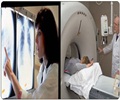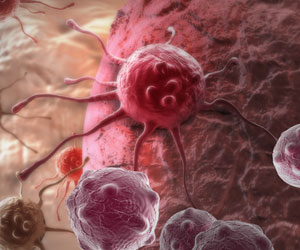Study says even when their tumors are shrinking in response to therapy, some non-small cell lung cancer (NSCLC) patients have a scattering of cancer cells that are undeterred by the drug
Dana-Farber Cancer Institute and Massachusetts General Hospital (MGH) Cancer Center scientists have said that even when their tumors are shrinking in response to therapy, some non-small cell lung cancer (NSCLC) patients have a scattering of cancer cells that are undeterred by the drug, causing the tumor to resume its growth.
They report their findings in the January issue of Cancer Cell. The findings suggest that identifying such patients and treating them with a combination of drugs from the very start of therapy can produce longer remissions.The study involves NSCLC tumors which are driven by a mutation in the gene EGFR. Such tumors, which account for about 12 percent of all NSCLC cases in the United States, often recede when treated with a tyrosine kinase inhibitor such as Tarceva(R) or Iressa(R), which targets the faulty EGFR protein.
A few years ago, this same group of investigators showed that NSCLCs being held in check by Tarceva can switch on an alternate growth circuit if they have too many copies of a gene called MET. Such tumors are considered Tarceva- and Iressa-resistant.
In the new paper, investigators led by Pasi Jänne, MD, PhD, of Dana-Faber, and Jeffrey Engelman, MD, PhD, of MGH, found that some patients with EGFR-mutant lung cancers harbor a small number of tumor cells with an overabundance, or "amplification," of MET even before treatment with a tyrosine kinase inhibitor, and that those few cells are enough to spark drug resistance. One of the triggers for resistance, the researchers found, is HGF, a ligand or "hook" that activates the MET protein.
When activated, HGF works through two entirely different channels to produce drug resistance, the authors report. First, it can generate cell-growth signals through a protein called GAB1. Second, it expands the number of MET-amplified cancer cells, ensuring they will become the dominant type in the lung tumors.
"Not only can HGF spur cell growth on its own, it can speed up the process by which MET-amplified cells emerge and take over the composition of the tumor," says Jänne, who was co-senior author of the paper with Engelman. In about 20 percent of NSCLC patients who are resistant to Tarceva the mechanism is amplification of MET, and in another 20 percent it may involve HGF.
Advertisement
"Our findings provide a strong rationale for combination treatment strategies as initial therapies for some patients," Jänne remarks. "This is especially the case in patients with evidence of pre-existing MET amplifications."
Advertisement
Source-Eurekalert
RAS















